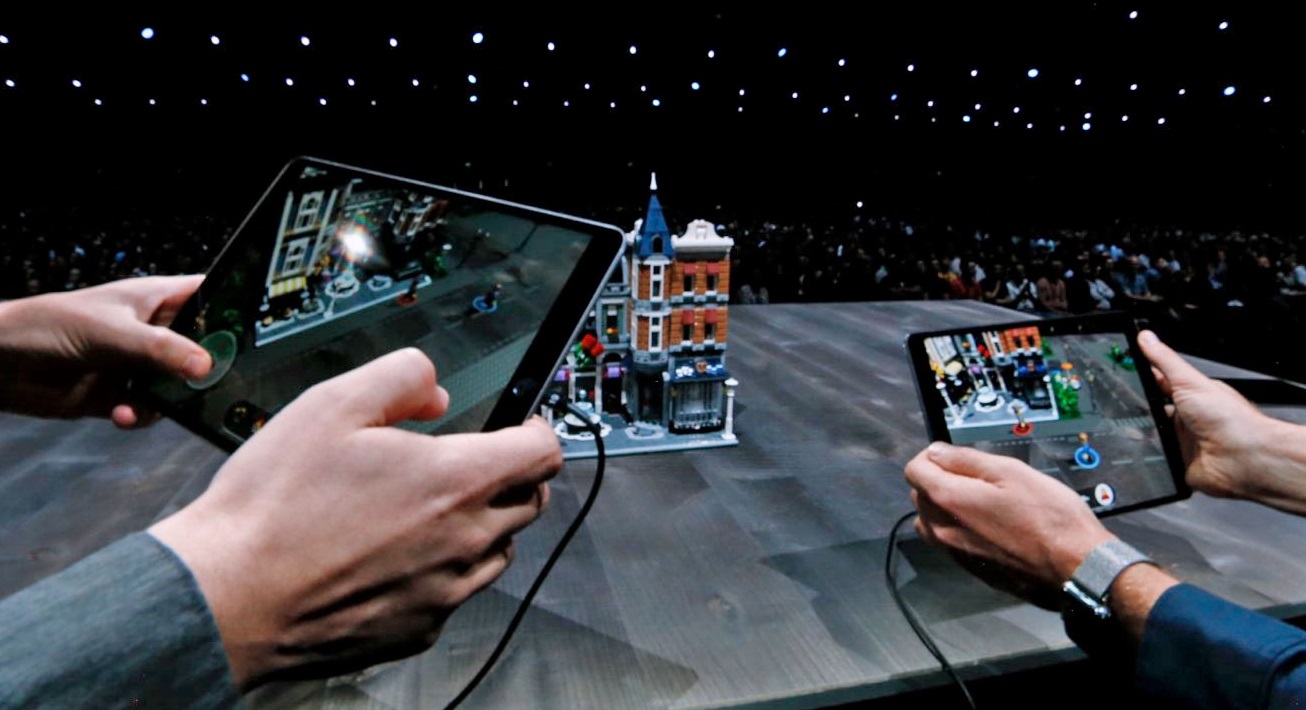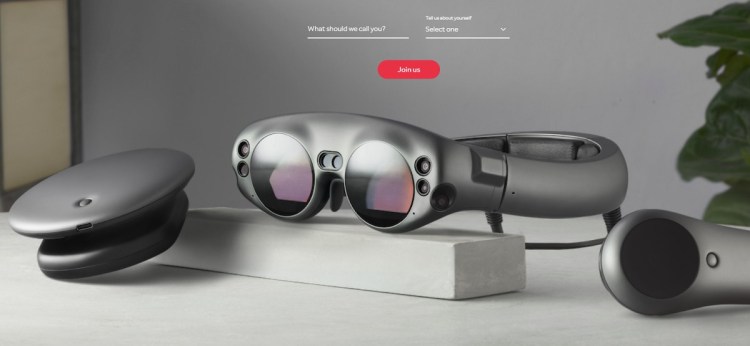New augmented reality announcements and demos now surface every day, but almost every piece of AR news suffers from the same issue: No matter how cool it sounds at first, it will generally not be practical for regular people. That’s fundamentally different from virtual reality (VR) news, which tends to focus on devices and experiences that people are actually buying.
The crux of AR’s issue is that there’s no affordable wearable hardware out there. There’s wearable hardware, but it’s not affordable. And there’s affordable hardware, but it’s not wearable. To understand why this matters, let’s look at a couple of AR stories that surfaced over the past 24 hours.
First, more than three years after the product was announced and two years after it was released, Microsoft is finally offering demonstrations of its HoloLens AR wearable in 14 select Microsoft Stores. So if you’re in one of a handful of major U.S. cities, Sydney in Australia, or Calgary in Canada, you can now try HoloLens for yourself by booking an appointment.

In some sense of the word, this is “news” because so few people have actually used the $3,000 HoloLens since it was unveiled — Microsoft has sold a meager 50,000 units over the past two years. It’s sort of weird that the demos are starting now, because a more affordable replacement is expected to debut in January, though “more affordable” could as easily be “$800” as “$2,800” for something so expensive. But in any case, no one’s buying a HoloLens to play Minecraft, which was demoed three years ago and still remains the headset’s most compelling showcase.

Above: Minecraft on HoloLens at E3 2015.
Second, and on the complete opposite side of the spectrum, a video posted today by Google’s Morten Just shows off how iOS 12 ARKit can create multiple augmented reality kitchen timers. Initially, this seems practical and smart — people actually use kitchen timers and would love to be able to see a bunch of them at once during cooking. Better yet, millions of Apple devices could use this app, which would likely sell for under $3 if it’s released. It also makes for a very cool video.

But unlike HoloLens, which is impractical because real people can’t afford to buy the existing wearable hardware, this app is impractical because ARKit doesn’t run on wearables: No one walks around a kitchen holding a camera up to their pots and pans on the stove while cooking. So this is a compelling technology demo, yet like HoloLens, it’s waiting on something that doesn’t exist — affordable AR glasses — to actually become useful.

I’ve previously run stories on upcoming AR devices ranging from Leap Motion’s North Star headset (above) to Magic Leap’s upcoming “spatial computing platform” Magic Leap One, as well as games such as an AR demonstration version of Street Fighter II. All of these stories are actually interesting on the surface, but their common thread is that they are basically just demos, at least for now.

Above: Street Fighter II demo on ARKit.
North Star exists only if you’re willing to 3D-print and purchase various parts yourself. Magic Leap has spent four years working on its as-yet-unpriced device, and it looks like only developers will be able to purchase it this year. And that cool Street Fighter II demo — which could in theory actually be played on an iOS device — was produced by an independent coder, not Capcom, so it’s not really coming out anytime soon.

Above: Lego in AR
There’s another collection of AR stories that are interesting in the abstract, but bereft of either details or utility. Lego had an impressive AR demo of Lego AR City at Apple’s 2018 WWDC, but the app has no release date or price. Google spotlighted a collaborative AR line-drawing app at its I/O developers conference, but most people would struggle to explain the point of such a thing. It’s kinda-sorta neat in the abstract, but who’s going to launch it more than once?

I’m not saying that the list of practical AR applications begins and ends right now with Pokémon Go, but there hasn’t been anything else that has taken off on a comparable level — and I’m honestly not sure that anything else should, until affordable AR wearables are available. It’s dangerous enough for people to be wandering around in public while distractedly staring into their phones hunting for monsters, and it’s not hard to imagine that other AR apps may arrive with even more serious real-world consequences. Unless affordable wearables arrive to free your hands, simple games and other basic indoor applications might be AR’s best current use.
Until that happens, my recommendation is to focus on what’s happening in virtual reality: Right now, it’s delivering a lot more bang for the buck, and there are a lot of VR games and peripherals to enjoy playing with. Despite all the years that it’s spent in development, AR is just at the very beginning right now, and it still has a way to go — in both wearable hardware and user experience polish — before it becomes practical enough for regular users to really buy in.

